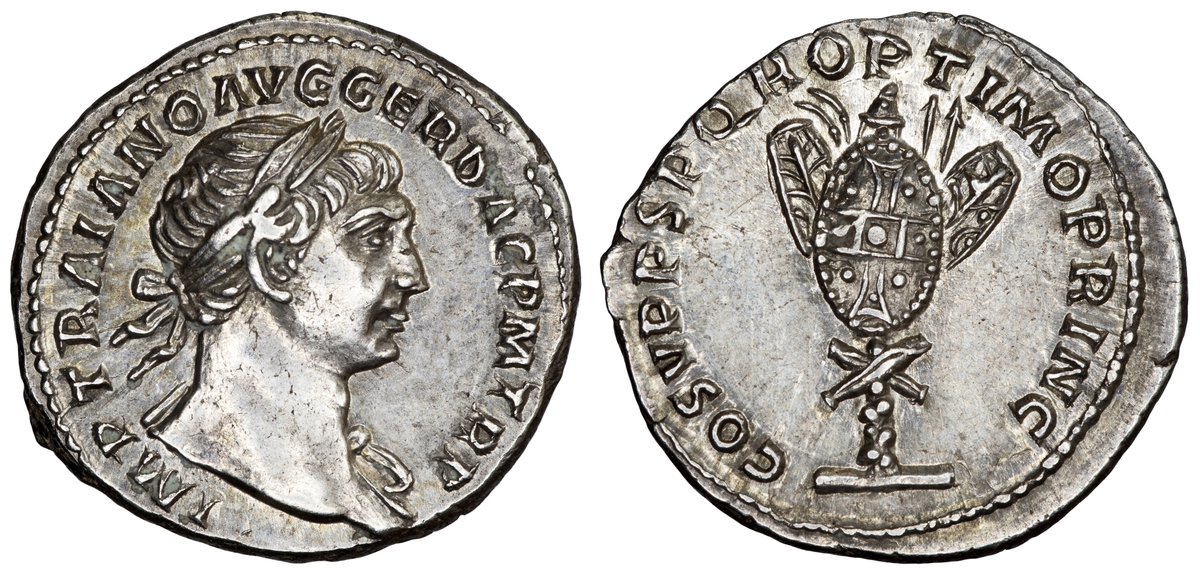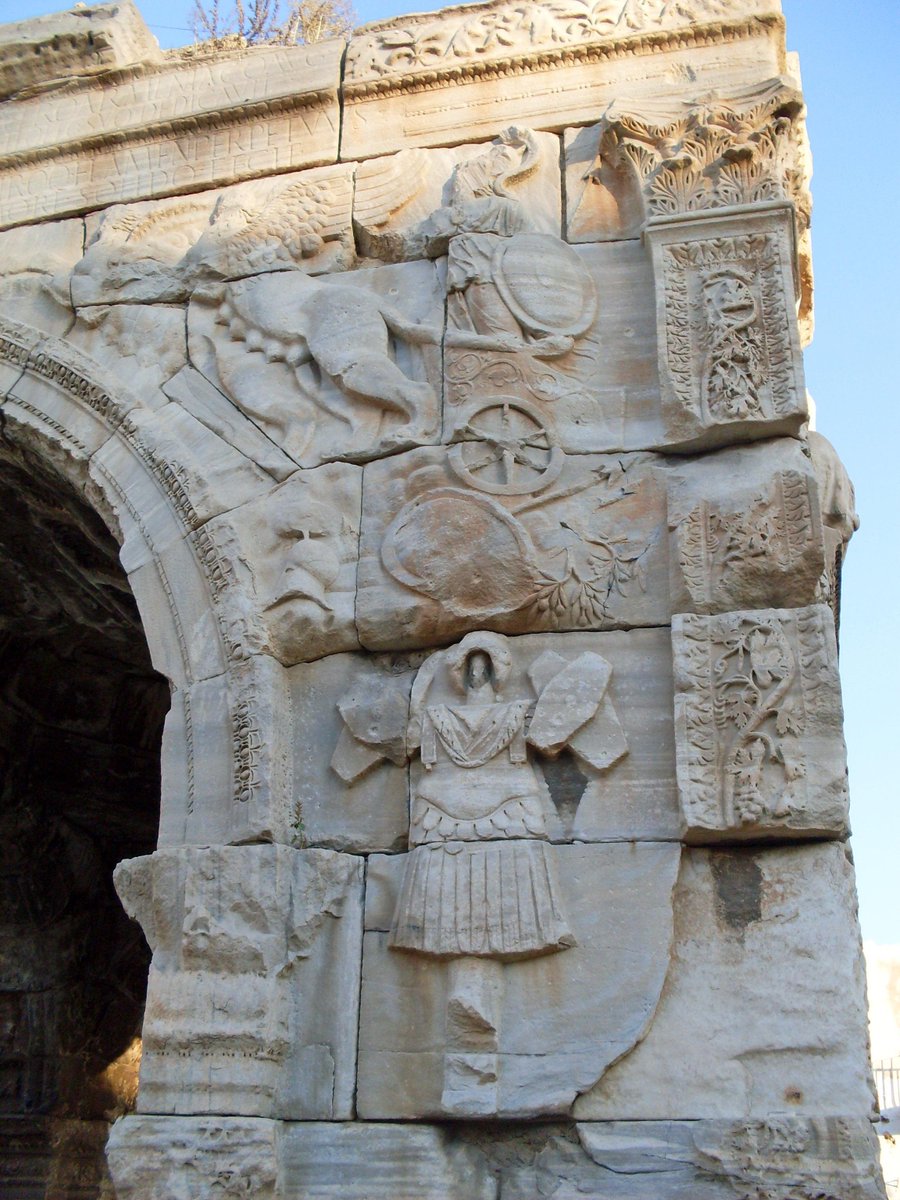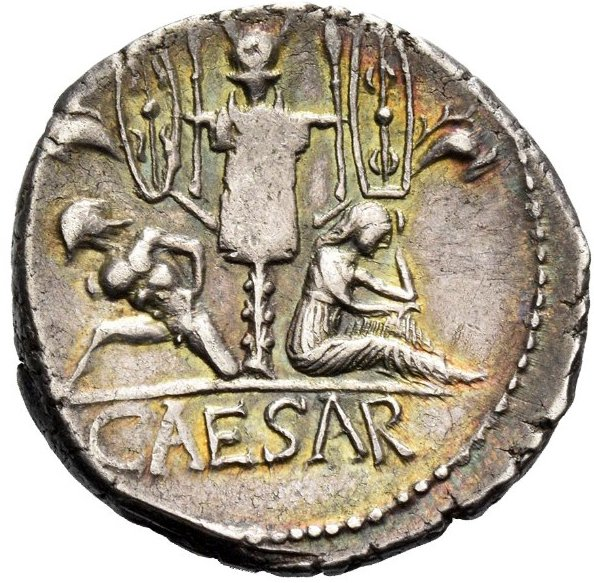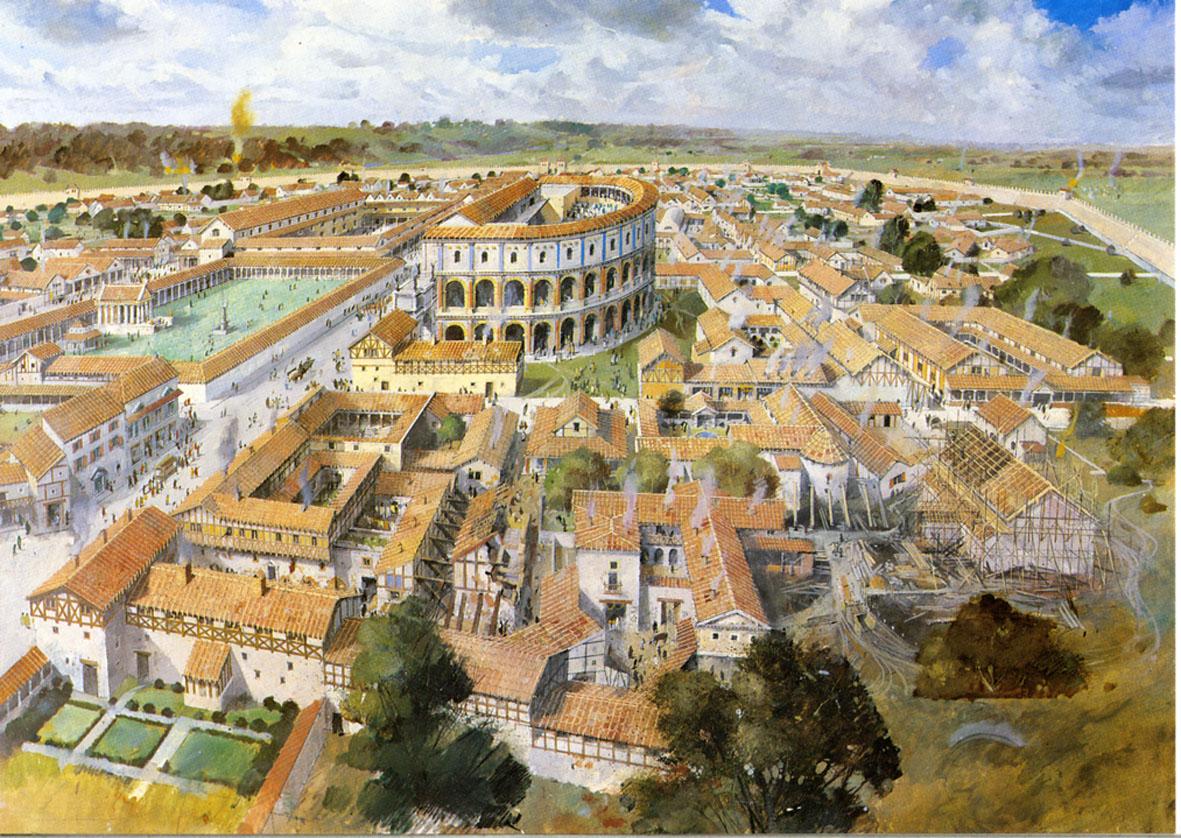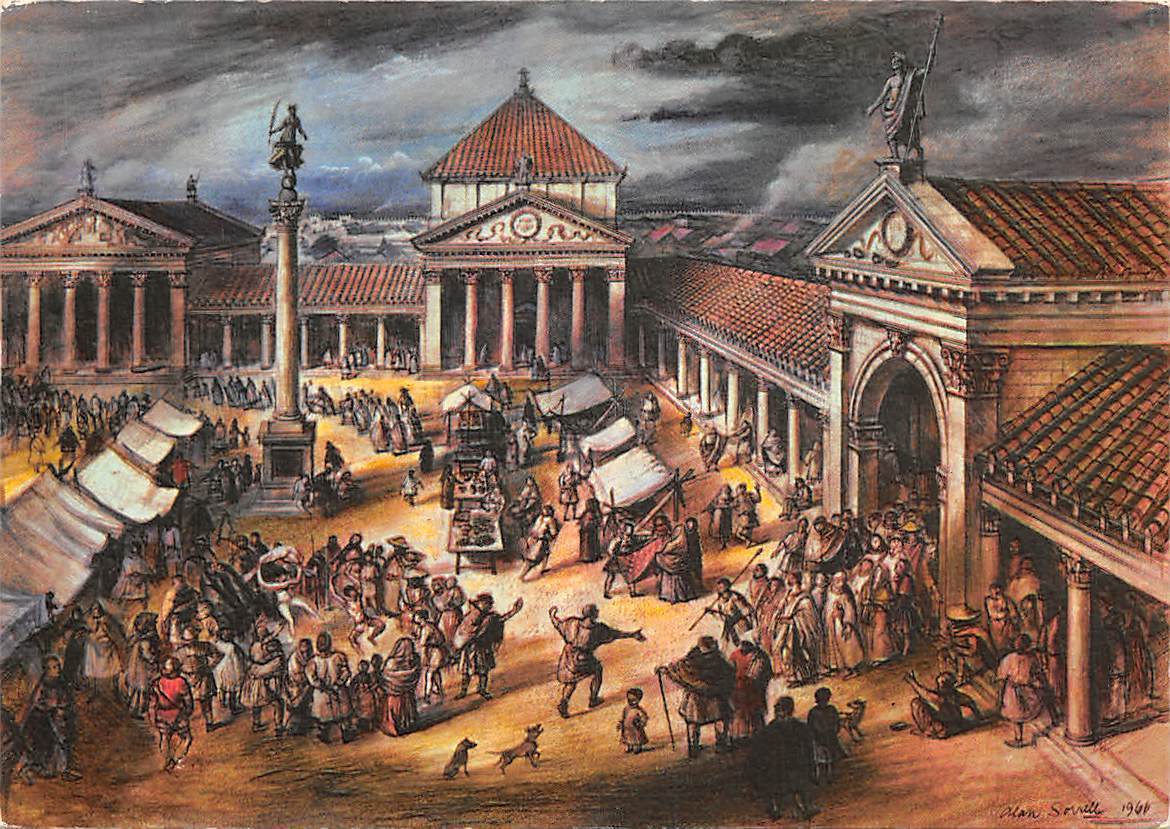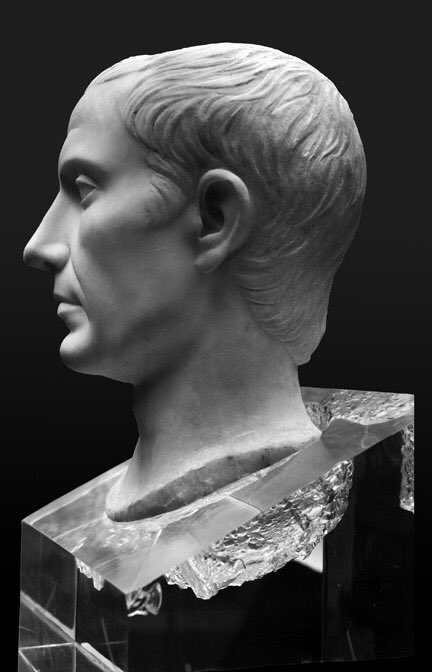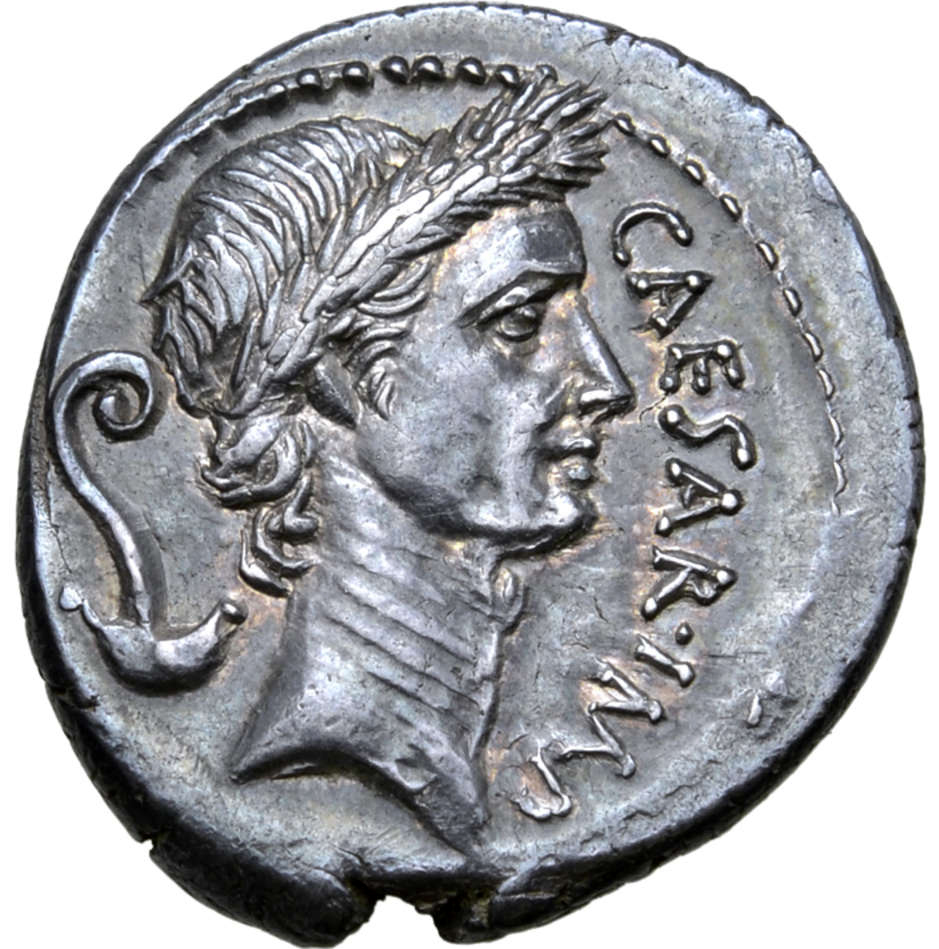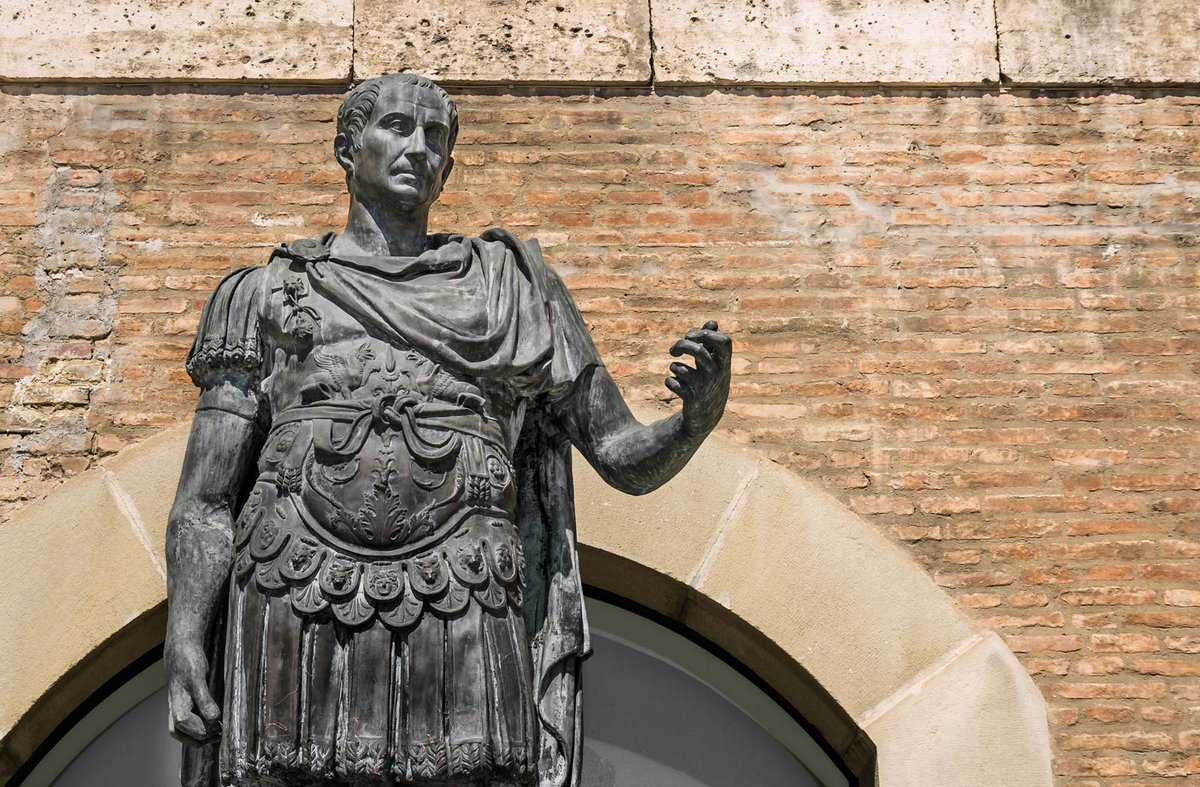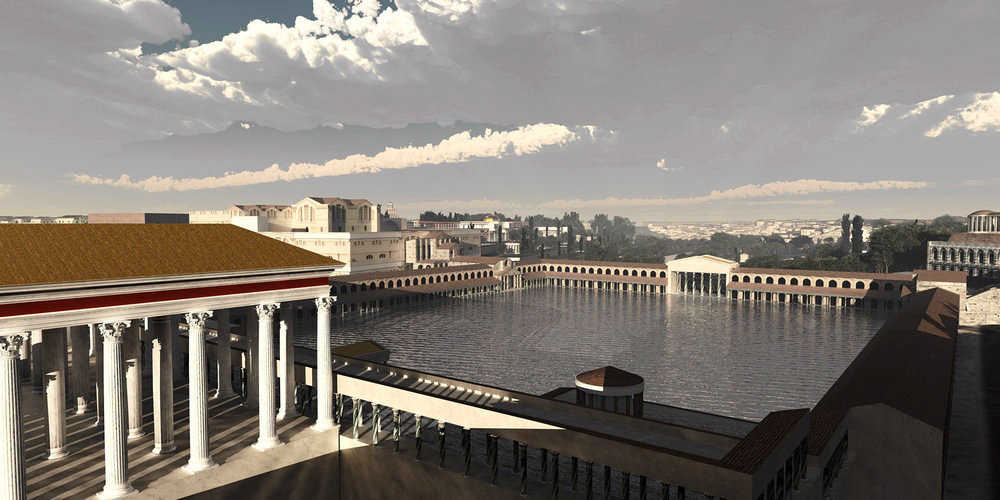
1) In the mid 2nd century AD, two brothers stood on the bank of the newly constructed Foss Dyke canal near Roman Lincoln. Bruccius and Caratius Colasunus had together invested in a fine dedication to one of the gods, perhaps in fulfillment of a vow they had once made or hoping.. 
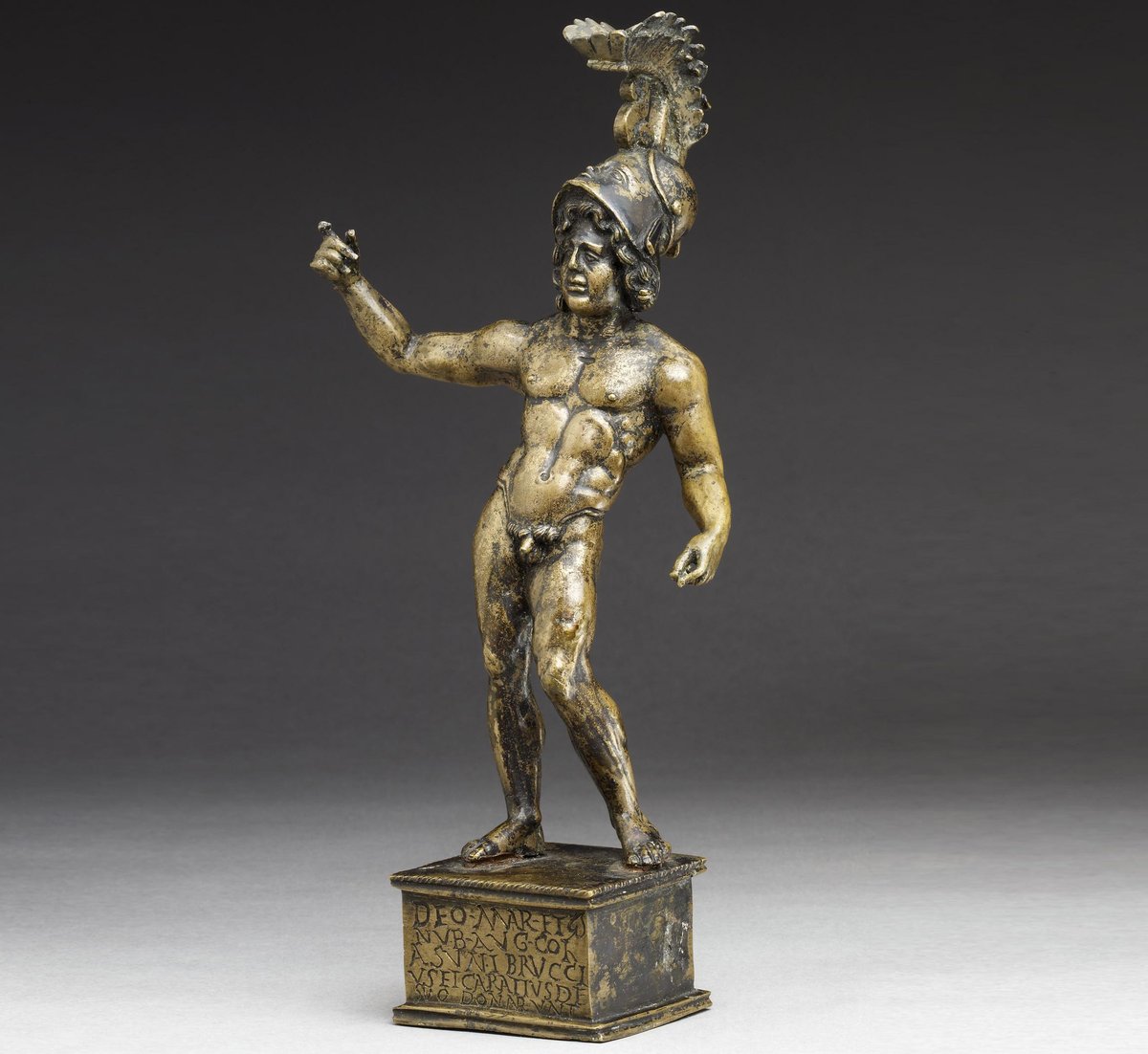
2) ..the god might watch over a coming venture. For their offering the Colasuni brothers had paid the substantial sum of 100 sesterces (25 silver denarii or 1 gold aureus) to the metalworker Celatus, for the creation of an impressive bronze statuette of Mars, the god of war... 
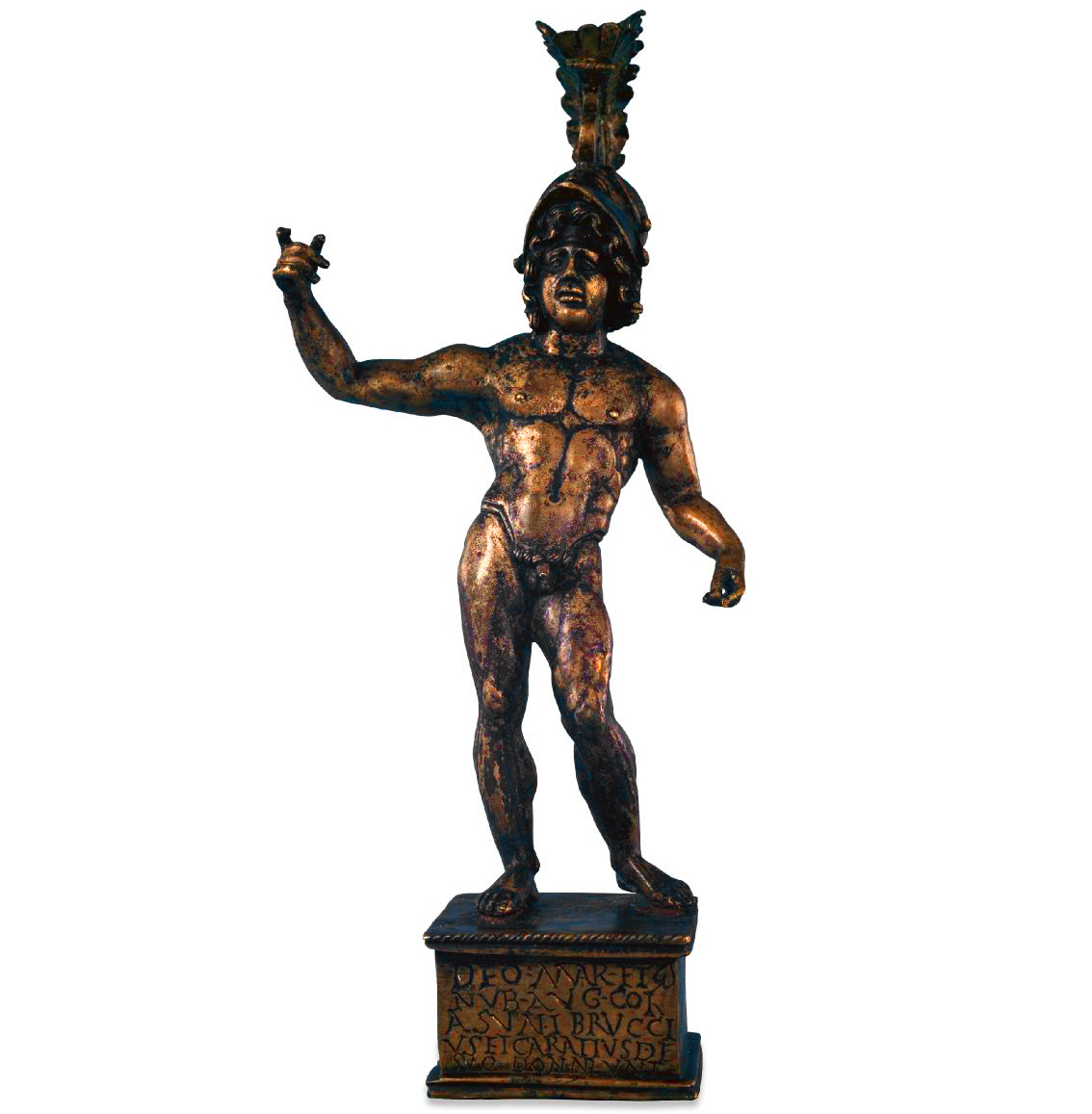
3) Celatus had also decided to buy-in to the Colasuni brothers' dedication by donating the value of the raw bronze (12 sesterces) for free. His statuette of Mars shows the muscular god stood on a plinth, wearing nothing but a large helmet with high plume. 

4) The three men made sure the exact details of this financial arrangement were engraved around the statuette's plinth, so that the gods would know precisely who was deserving of their divine favour... 

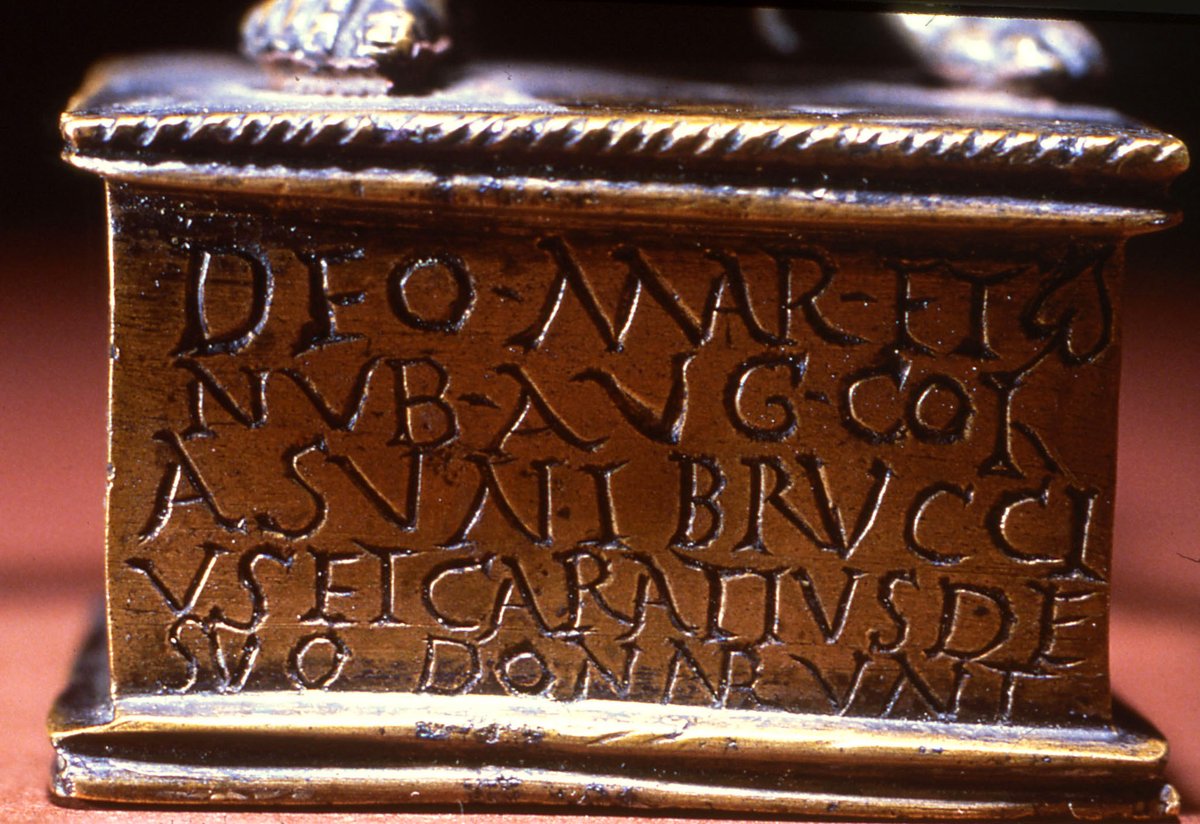

5) Celatus may have joined Bruccius and Caratius at the canalside that day to see the offering done. After the appropriate prayers and invocations to Mars and the Spirits of the Divine Emperors, they threw the bronze statuette into the dark water. 
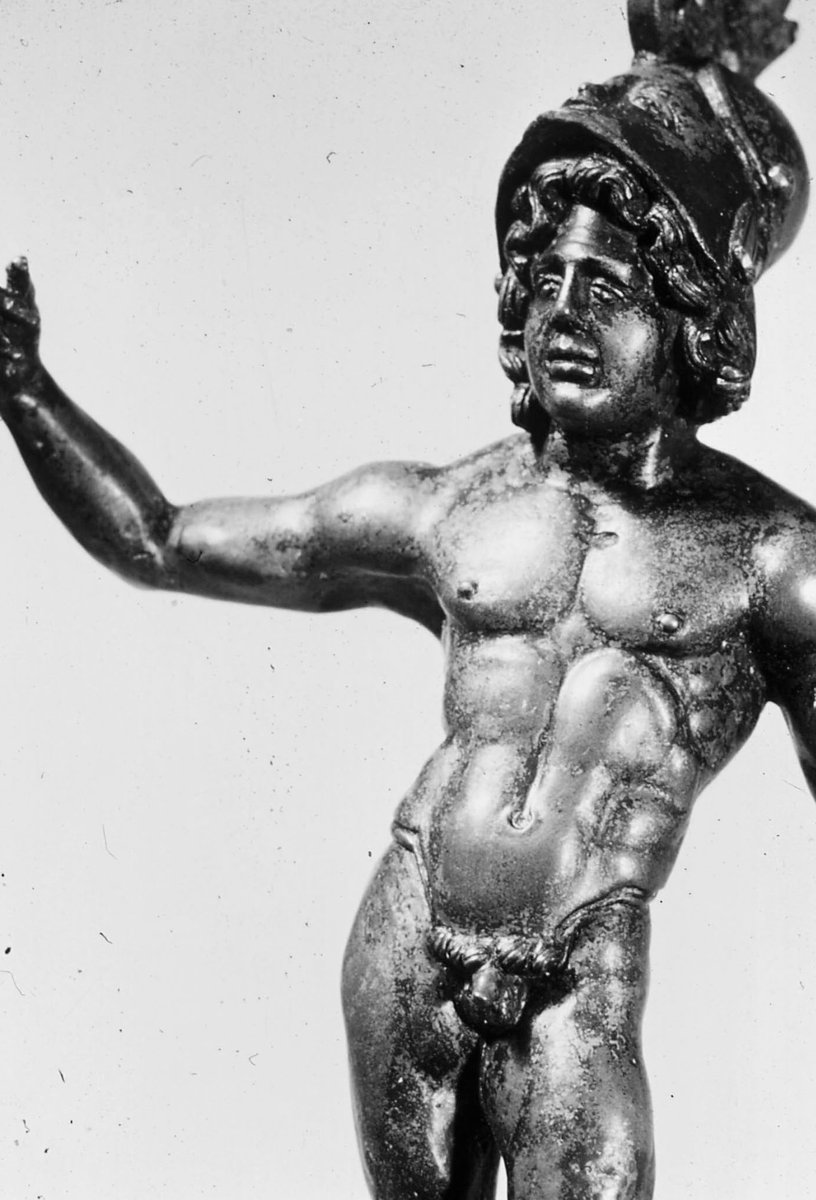
6) The statuette of Mars made by Celatus for the Colasuni brothers, lay at the bottom of the Foss Dyke canal for 1500 years - before it was discovered and taken to the British Museum where it is still displayed today. [END] #Roman #religion #ancient #Britain #RomanBritain 

The statue plinth reads: “Deo Mar(ti) et Nu(mini)b(us) Aug(ustorum) Colasuni Bruccius et Caratius de suo donarunt
ad sester(tios) n(ummos) c(entum) Celatus aerarius fecit et aeramenti lib(ram) donavit factam (denariis) III”
ad sester(tios) n(ummos) c(entum) Celatus aerarius fecit et aeramenti lib(ram) donavit factam (denariis) III”

Translation:
“To the god Mars and the Divinities of the Emperors, the Colasuni: Bruccius and Caratius, presented this at their own expense at a cost of 100 sesterces; Celatus the coppersmith fashioned it and also gave a pound of bronze to the value of 3 denarii.”
“To the god Mars and the Divinities of the Emperors, the Colasuni: Bruccius and Caratius, presented this at their own expense at a cost of 100 sesterces; Celatus the coppersmith fashioned it and also gave a pound of bronze to the value of 3 denarii.”
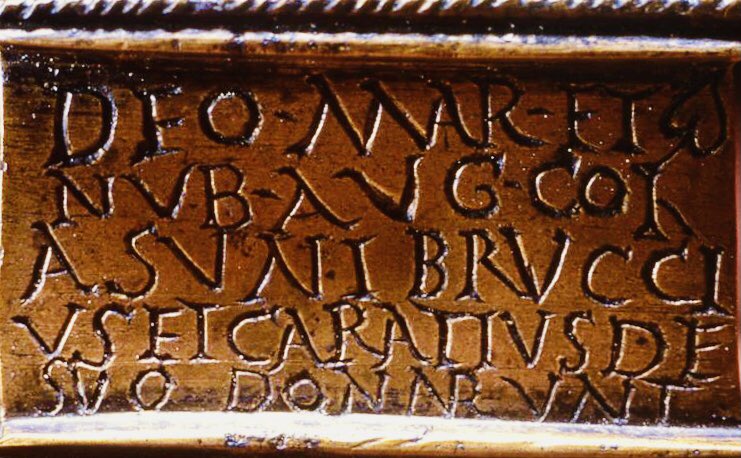
• • •
Missing some Tweet in this thread? You can try to
force a refresh





